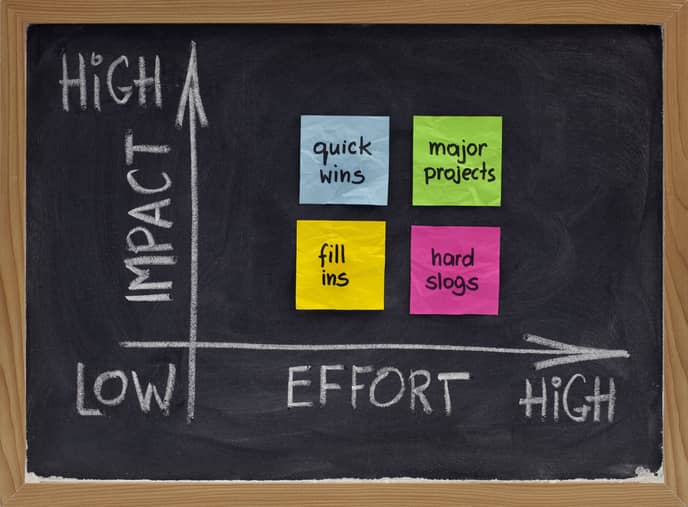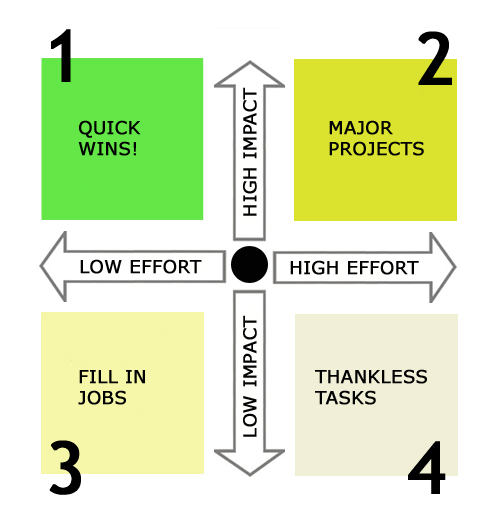Most arguments for putting process improvement in place revolve around the positives it brings to an operation. However, many find it motivating to look at the situation from the opposite side: What do you stand to lose?
Six Sigma provides a way to make that assessment with the Cost of Poor Quality (COPQ) tool. COPQ makes two things apparent quickly. The first is that there is significant lost opportunity cost when businesses fail to implement continuous process improvement. The second is that quality ranks highest among all success metrics.
Business leaders especially need this lesson. The late Joseph Juran, a famed quality expert, made this argument. He wrote: “It is most important that top management be quality-minded. In the absence of sincere manifestation of interest at the top, little will happen below.”
How Poor Quality Costs Organizations
The very existence of Six Sigma and Lean Six Sigma revolves around the issue of quality, or the lack thereof. Motorola first put Six Sigma into play to reduce errors and reduce defects on the factory floor. Toyota created Lean to put the focus on meeting the needs of customers at all levels of an operation. The highest quality product is inherent in the ideas behind both.
Those who put Six Sigma into action can calculate COPQ. For example, the American Society of Quality (ASQ) reports that COPQ used in a Six Sigma initiative can reduce poor quality costs, allowing management to improve customer satisfaction and bottom-line results.
COPQ is sometimes calculated during the “define” phase of a DMAIC project. It’s possible to quantify COPQ by breaking the costs into sections recommended by Juran.
Appraisal – The costs associated with evaluation of materials, processes, products and services to ensure they conform to specifications. Costs can come from testing, measuring and auditing.
Internal failures – These costs happen when a defect is noticed and must get corrected before a product reaches a customer. They include scrapping materials, rework, equipment downtime and even injuries to employees.
External failures – These costs happen when a customer discovers an error. They can include repairs, time spent handling complaints and returns, and costs and employee time spent to fulfill a warranty.
Prevention – The costs associated with training, preventive maintenance, quality planning and other prevention activities.
In most cases, putting more money and effort into prevention will provide a better return on investment than handling the impact of poor quality in the manufacturing process. However, making the COPQ calculation is often necessary to show that this is the case.
That’s because, as CMS Wire put it, “Many companies believe how they’re doing it now is working.”
Quality As The Most Important Metric
It’s possible to look at total income or profit margins as the most important metric for a business, which after all is built to make money. But poor quality will eventually undermine both. High quality, on the other hand, will improve both.
ASQ points out that many companies have quality-related costs as high as 15% to 20% of sales revenue. In some cases, those poor quality costs reach 40% of total operations. ASQ reports that a “general rule of thumb” is to have COPQ at about 10% to 15% of operations at most.
“Effective quality improvement programs can reduce this substantially, thus making a direct contribution to profits,” ASQ writes. A quality cost system can have a positive impact on missions, goals and objectives.”
An Example of How COPQ Works
To show how COPQ works and the impact of poor quality, CMS Wire writes about a software company that worked to get out a product in a competitive market. The product hits the market and the company begins to gather feedback. If it’s not good and there are many problems, the design team must drop whatever they are doing and fix problems with the original product.
They will have to go through customer complaints, identify the problems, design fixes, run additional tests and do additional research, bring in engineers to work on the fixes, then bring in sales and marketing to push out the fixed product to customers (if it can be fixed, of course).
That’s a lot of COPQ, including:
- The cost of the additional design teamwork
- The cost of all the wasted time and materials that went into the original product that was scrapped
- The cost of delaying the next project
- The costs of customer service and sales having to spend time on the original, flawed release
- The costs of employee time, materials and testing done by everyone involved on the fixes
- The cost of losing customers who may never come back
- The cost of negative word-of-mouth and press about the failed product. This can have the further cost of impacting stock prices if the company is public, harming both employees who hold stock and investors
Clearly, an ounce of prevention is worth a pound of cure in this case, and most all cases when COPQ is applied. Whether a company makes software or soccer balls, they should consider making quality their first metric, because all else flows from the quality of a product or service.



